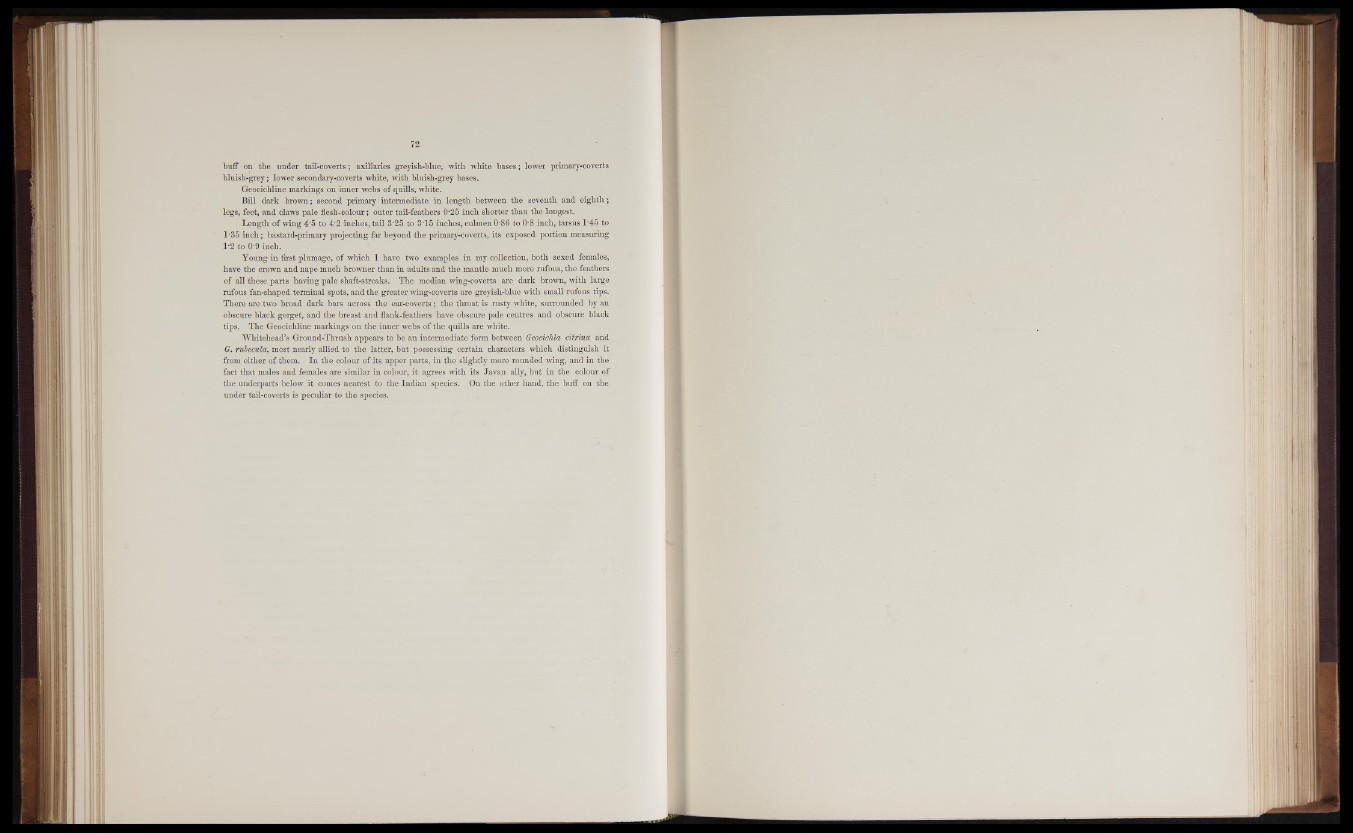
buff on the under tail-coverts; axillaries greyish-blue, with white bases; lower primary-coverts
bluish-grey; lower secondary-coverts white, with bluish-grey bases.
Geocichline markings on inner webs of quills, white.
Bill dark brown; second primary intermediate in length between the seventh and eighth;
legs, feet, and claws pale flesh-colour; outer tail-feathers 0*25 inch shorter than the longest.
Length of wing 4*5 to 4’2 inches, tail 3 ’25 to S'15 inches, culmen 0-86 to 0‘8 inch, tarsus 1*45 to
1’35 inch; bastard-primary projecting far beyond the primary-coverts, its exposed portion measuring
1*2 to 0‘9 inch.
Young in first plumage, of which I have two examples in my collection, both sexed females,
have the crown and nape much browner than in adults and the mantle much more rufous, the feathers
of all these parts having pale shaft-streaks. The median wing-coverts are dark brown, with large
rufous fan-shaped terminal spots, and the greater wing-coverts are greyish-blue with small rufous tips.
There are two broad dark bars across the ear-coverts; the throat is rusty white, surrounded by an
obscure black gorget, and the breast and flank-feathers have obscure pale centres and obscure black
tips. The Geocichline markings on the inner webs of the quills are white.
Whitehead’s Ground-Thrush appears to be an intermediate form between Geocichla citrina and
G. rubecula, most nearly allied to the latter, but possessing certain characters which distinguish it
from either of them. In the colour of its upper parts, in the slightly more rounded wing, and in the
fact that males and females are similar in colour, it agrees with its Javan ally, but in the colour of
the underparts below it comes nearest to the Indian species. On the other hand, the buff on the
under tail-coverts is peculiar to the species.
tit